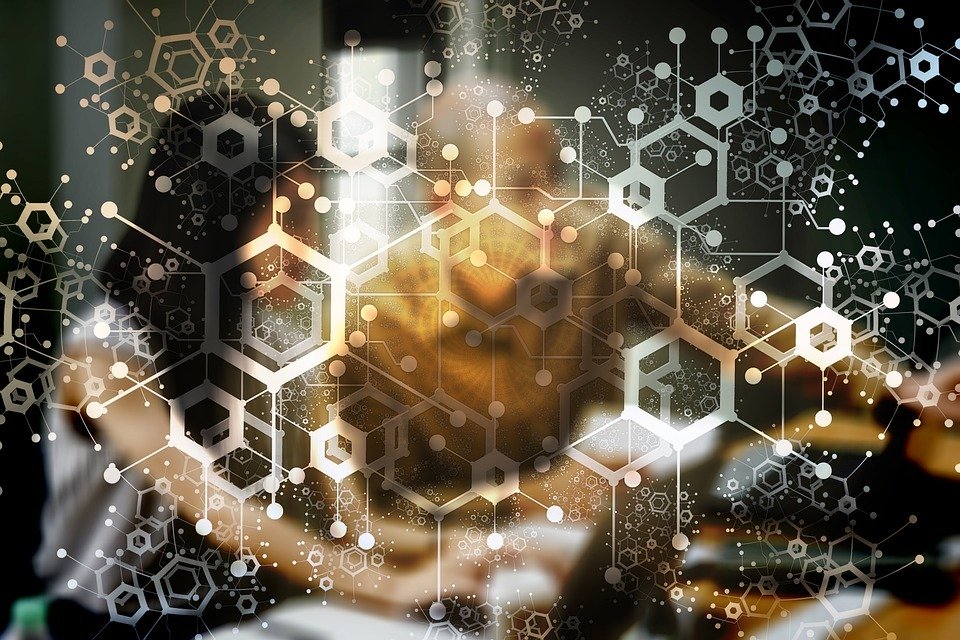The fusion of artificial intelligence (AI) and blockchain technology is revolutionising the cryptocurrency industry, creating a wave of innovations that are reshaping how we perceive and engage with digital assets. If you’ve been keeping an eye on cryptocurrency or wondering what the future holds, 2025 is set to be a pivotal year. In this article, we’ll explore the key trends emerging from the powerful synergy of AI and blockchain in cryptocurrency and how they will shape our financial and technological landscapes.
Why AI and Blockchain Matter in Cryptocurrency
The cryptocurrency space has become increasingly complex, with millions of transactions taking place daily, along with new projects, tokens, and decentralised apps (DApps) emerging. To navigate this complexity, AI and blockchain technologies are stepping in to provide innovative solutions. While blockchain ensures transparency, security, and decentralisation, AI offers automation, data analysis, and predictive capabilities. Together, they’re creating groundbreaking possibilities in cryptocurrency markets.
But you may wonder, why does this pairing matter so much?
Let’s put it simply: blockchain is the ledger that keeps things secure and trustworthy, while AI makes sense of the never-ending sea of data. Without AI, it can be tough to extract meaningful insights from blockchain systems and cryptocurrency markets. Without blockchain, AI-driven systems may lack trust and transparency. Blend these two, and you’ve got a match made in tech heaven.
Key Trends in AI and Blockchain for Cryptocurrency in 2025
Let’s dive into the top trends that should be on everyone’s radar as we approach 2025.
1. AI-Powered Crypto Trading and Investment Strategies
The crypto markets are notorious for their volatility. Predicting price movements in such a fast-changing environment is a challenge for any human trader. In 2025, AI-powered trading bots and predictive analytics tools are expected to dominate the scene, providing retail and institutional investors with cutting-edge tools for making data-driven decisions.
Practical Applications:
- AI algorithms will identify profitable trading opportunities with high precision.
- AI-generated sentiment analysis will provide insights into how news events, social media chatter, or even political developments affect cryptocurrency prices.
In fact, companies like SingularityDAO are already developing AI-based systems that predict market movements and manage portfolios. By 2025, we can expect these solutions to become more accessible, automated, and personalised.
2. Enhanced Fraud Detection and Security
A major concern in cryptocurrency today is fraudulent activities, including scams, hacking, and money laundering. Blockchain’s transparency paired with AI’s pattern recognition capabilities is poised to enhance security in ways we’ve never seen before.
What to Expect:
- AI models will identify unusual patterns in blockchain transactions, flagging potentially fraudulent activities in real-time.
- AI can predict vulnerabilities in decentralised finance (DeFi) protocols, enabling developers to fix flaws proactively.
By 2025, blockchain networks integrated with AI will offer enhanced fraud detection and prevention, boosting confidence in cryptocurrency ecosystems.
3. Decentralised Autonomous Organisations (DAOs) with AI Integration
DAOs—organisations governed by smart contracts—are already a major feature of the crypto space. Integrating AI into these structures will supercharge their decision-making processes.
What Will Change:
- AI algorithms will analyse vast amounts of data to provide DAOs with actionable insights, enabling them to make smarter governance decisions.
- Smart contracts will become even “smarter” by incorporating machine-learning algorithms that evolve over time.
In practical terms, this means that by 2025, DAOs could become more efficient and self-improving, operating with minimal human intervention—a game-changer for decentralised governance.
4. AI-Driven Personalised Financial Tools
For newcomers and experienced investors alike, cryptocurrencies can be challenging to navigate. By 2025, AI-powered tools tailored to individual needs will make a big difference, simplifying the user experience.
What This Will Look Like:
- Personalised AI assistants will recommend cryptocurrencies or DeFi protocols based on your goals (e.g., long-term holding vs short-term trading).
- Voice-enabled bots will make crypto investing more accessible, even for those with limited technical knowledge.
Imagine a scenario where you ask, “Where should I invest my Bitcoin?” and a voice-based AI assistant gives you a breakdown of current market trends and potential risks—all while tying it back to your specific investment goals.
5. Scalability and Energy Efficiency Solutions for Blockchain Networks
Scalability and energy consumption remain two of the biggest challenges for blockchain networks. Cryptocurrency systems like Bitcoin and Ethereum have been criticised for their energy use. However, with the integration of AI by 2025, blockchain scalability and sustainability may no longer be concerns.
The Role of AI:
- AI algorithms can optimise blockchain mining and validation processes to reduce energy consumption.
- Machine-learning models will create better consensus mechanisms, such as AI-enhanced Proof-of-Stake (PoS), enabling faster and more efficient block confirmations.
A move towards greener blockchain and cryptocurrency networks will attract more sustainable-minded organisations and investors into the sector.
6. Tokenised AI Models on Blockchain
By 2025, the intersection of AI and blockchain will give rise to tokenised AI models. These are AI solutions whose access, deployment, or results are managed using blockchain-based tokens.
Why Tokenisation Will Matter:
- This will create a marketplace for AI models, where developers can monetise their creations securely through smart contracts.
- Businesses will have access to on-demand AI tools without needing to build the infrastructure from scratch.
Leading the charge in this area is Fetch.ai, a project that combines blockchain with autonomous AI agents. The result? A more democratised AI economy.
7. AI-Powered Privacy Solutions
Cryptocurrency users often seek anonymity and privacy—but this shouldn’t come at the cost of transparency or security. AI will play a pivotal role in tackling this paradox by enabling privacy through advanced cryptographic solutions.
Trends to Note:
- AI can enhance privacy coins by improving algorithms used for transaction obfuscation (e.g., zero-knowledge proofs).
- AI systems can promote secure data sharing while maintaining user confidentiality, particularly for businesses relying on blockchain tech.
By 2025, we may see a balance between privacy and compliance, reducing friction between regulators and decentralised platforms.
The Hurdles Ahead: Challenges of Integrating AI and Blockchain
Of course, these opportunities come with significant challenges:
- Computing Power: The combination of AI and blockchain requires substantial processing power, creating potential barriers for smaller players.
- Data Bias: AI systems need unbiased, diverse datasets for accurate predictions, but biases could seep into AI-powered trading systems and impact fairness.
- Regulation: AI models could raise ethical and regulatory questions. For instance, how should regulators oversee AI-driven DAOs or AI-governed financial platforms?
Recognising these hurdles early can help innovators find solutions and accelerate adoption in 2025.
Practical Tips for Investors in 2025
For those looking to capitalise on the AI-blockchain revolution in cryptocurrency, here are some actionable tips:
- Stay Informed: Keep an eye on projects blending AI and blockchain, such as Fetch.ai or SingularityNET, as they are leading innovation.
- Diversify Investments: Don’t put all your eggs in one basket. Use AI-powered portfolio management tools to balance your crypto assets.
- Leverage Educational Resources: New technologies can be overwhelming. Learn the basics of AI and blockchain to understand how these trends may impact your financial goals.
Frequently Asked Questions (FAQs)
1. How is AI used in cryptocurrency trading?
AI analyses market data, price trends, and patterns to predict market movements and optimise trading strategies.
2. Can AI improve blockchain scalability?
Yes, AI can help design more efficient consensus mechanisms and optimise energy consumption, leading to faster transactions.
3. Are there any AI-blockchain projects currently active?
Projects like Fetch.ai, SingularityNET, and Ocean Protocol are already exploring the intersection of AI and blockchain.
4. Will AI replace human traders in cryptocurrency?
AI tools significantly enhance trading; however, human intuition and strategic decision-making will likely remain relevant.
5. Are AI-powered crypto tools accessible to beginners?
By 2025, we can expect simplified, user-friendly tools designed for beginners, including AI-driven investment assistants.
Conclusion
The collaboration between AI and blockchain in cryptocurrency represents a new frontier full of opportunities and challenges. As we approach 2025, trends like AI-powered trading, decentralised governance, and energy-efficient blockchains are likely to dominate the space. For individuals and organisations alike, staying ahead of these trends could be the key to navigating and thriving in this evolving landscape.
So, whether you’re an investor, developer, or simply a tech enthusiast, the exciting convergence of AI and blockchain beckons you to explore its growing impact on cryptocurrency and beyond.
By embracing these advancements now, you’ll not only gain a competitive edge but also contribute to shaping the technological future of finance. Let’s step into 2025 ready to harness the full potential of AI and blockchain together.

